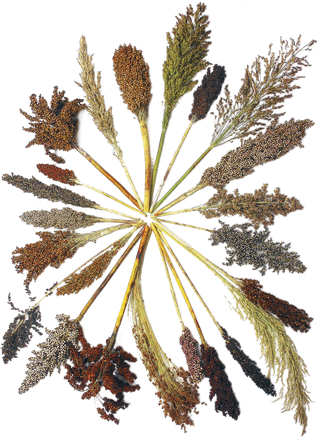- How can communities benefit from the commercialization of indigenous products?
- How can be best conserve crop wild relatives?
- How can breeders breed better pasta wheat?
- How did Europe end up using the wrong pepper?
- How can we monitor the escape of cultivated genes into the wild?
- How will seed industry consolidation affect diversity?
For royalty or for all?
You still have time to arrange to listen to the AgTalks session on “forgotten food crops,” from which I’ve borrowed the title of this post.
AgTalks presents the latest thinking, trends and research on policies and innovation in small-scale farming. This session, titled “For royalty or for all? Amaranth, teff, millet and cassava,” is intended to raise awareness about forgotten food crops that were once central to people’s diet centuries ago. These lost crops have huge nutritional value and economic potential, just waiting to be rediscovered.
The webcast is just waiting to be discovered on the IFAD website. It starts in about half an hour…
LATER: And thanks to the organizers (IFAD) for taking my question over Twitter. Fascinating to hear from Mary M. Delano Frier that when she started her work in Mexico using amaranth to improve kids’ nutrition in schools, she had to get material from the USA genebank. That’s now changed, apparently.
Brainfood: IPR in breeding, Cryo costs, Undervalued spp, Biodiversity change drivers, Cassava proteins, Sorghum seed sources
- ‘Do Not Privatize the Giant’s Shoulders’: Rethinking Patents in Plant Breeding. “Toll roads, not road blocks.”
- Implementation and cost analysis of a regional farm animal cryobank: an Italian case study. 2497 semen doses from 46 donor animals from 5 breeds cost €1550 annually, 83% for liquid nitrogen.
- Opportunities for Underutilised Crops in Southern Africa’s Post–2015 Development Agenda. Good for marginal land, good for nutritional diversity. But still not properly valued.
- Agricultural Management and Climatic Change Are the Major Drivers of Biodiversity Change in the UK. The first negatively, the second with mixed results. What about CWR specifically?
- Domestication Syndrome Is Investigated by Proteomic Analysis between Cultivated Cassava (Manihot esculenta Crantz) and Its Wild Relatives. The leaf and root proteins of two cassava cultivars were different from those of one wild accession. More work needed, methinks.
- Interhousehold variability and its effects on seed circulation networks: a case study from northern Cameroon. Wealthy households have access to more diverse sorghum seed sources.
Nibbles: Chinese genebanks, Rough times at Roughwood, EU seed laws, Cacao & coffee migrations, CIMMYT pix
- China’s largest genebank just got a little bit larger. And some context.
- Small Pennsylvania genebank may get a lot smaller.
- Denmark shows the way on seed saving in Europe.
- Chocolate really got around.
- Coffee didn’t do too badly either. But home is where the heart is.
- More pix of wheat wild relatives than you can shake a stick at.
Measuring the elements of sorghum
There’s a great photo on the cover of Plant Physiology this month.

The paper in question looks at the “ionome” of sorghum seeds. That’s a new one on me too. It’s the genes responsible for the accumulation of different elements in whatever tissue. The authors measured the levels of a whole suite of elements in the seeds of a carefully chosen set of very diverse, and equally carefully genotyped, sorghum accessions representing all races. By comparing phenotype with genoptype, they identified gene variants associated with high levels of zinc, manganese, nickel, calcium, and cadmium. Now breeders interested in biofortification know what to include in their crossing programs.